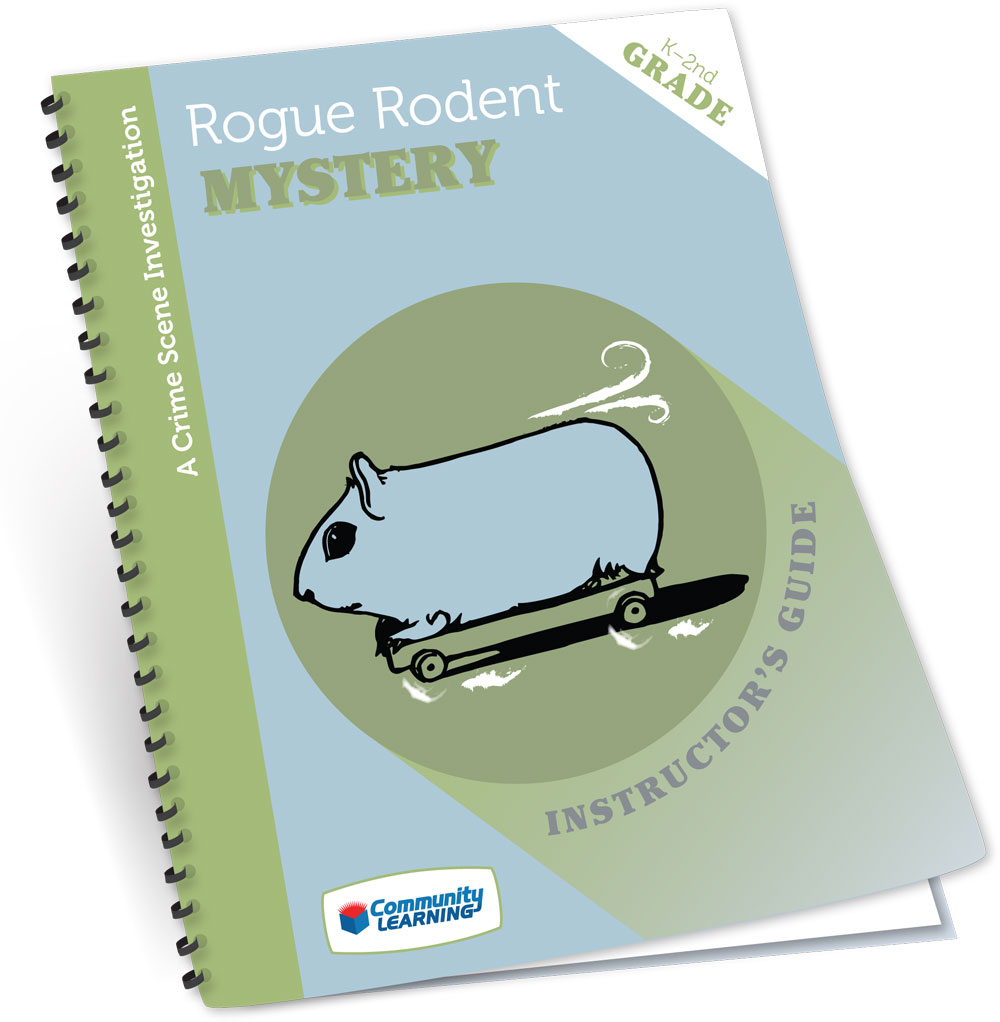Rogue Rodent Mystery Teacher Tutorial
3rd May 2017
Welcome to the journey of introducing forensic science to your smallest students!

We have prepared lesson by lesson tutorials with audio instructions to assist you in the preparation stages of teaching this course. No special technical or scientific (or forensic!) skills are necessary for you to teach The Rogue Rodent Mystery. This course is designed to ignite curiosity and stimulate authentic learning by creating real-life contexts ranging from lab analyses to field work to criminal investigation.
However, I do find that the more preparation I can put into teaching a course, the smoother it goes! I also know that your time is valuable and I hope that these tips and tutorials will be a quick and easy way to get you started on the right note.
Tips, hints, and just plain great ideas!
|
Lesson 1: Observing the Clues - Investigating with Your Senses In this first lesson, your students’ are introduced to the mystery of the missing guinea pig through a video taken immediately after realizing that Alice was missing. Students will also be introduced to the job of a forensic scientist and prepare to take on the role by practicing their skill of observation. |
|
|
Lesson 2: Recording Your Findings - Sketching the Scene This lesson will challenge your students to make a rough sketch of a pretend crime scene. The focus of sketching at this stage (rough) should be the inclusion of all objects, the proper positional placement and relative size of objects in the scene. |
|
|
Lesson 3: Listening to a Witness - Creating a Composite Sketch Students will discover that a picture can replace a long verbal description and help others better understand. In science it is very common to use pictures - photographs, diagrams and graphs – to convey your process and findings. |
|
|
Lesson 4: Analyzing Alibis - Monitoring the Movement of Suspects In this activity, students will hear the alibis of four suspects. They will practice the skills of a forensic scientist by listening carefully to each story. Then, using matching picture cards, students will retell the details of each suspect’s story in sequential order. |
|
|
Lesson 5: Applying Physics - Studying Force and a Falling Skeleton Students will focus on the fallen model skeleton in Mrs. Hawkins’s classroom to imagine (and predict) what happened on the day Alice was taken. By running a simple experiment, students will make a connection between a force (a rolling ball) and the resulting movement of the object (a model figurine). |
|
|
Lesson 6: Inspecting Pattern Evidence - Comparing Shoe Prints For this lesson, students will focus on visible, two- dimensional prints. They’ll study the visible, two-dimensional shoe prints left behind on Mrs. Hawkins’ classroom floor. Students will try to match parts of a print to a larger pattern and measure the length and width of the shoe print. |
|
|
Lesson 7: Researching Rodents - Discovering a Guinea Pig's Survival Needs Students will be asked to learn more about guinea pigs to better understand how Alice came to be missing. Is it possible that a suspect took Alice home? This information will be recorded in a table. Students will use the table to make arguments about the potential involvement of each suspect. |
|
|
Lesson 8: Following the Colorful Clues - Making Orange Paint In this activity, students will figure out which suspect was most likely to have left behind orange paint smudges by mixing together different primary colors of paint. Students will be challenged to follow a procedure in the correct order. |
|
|
Lesson 9: Weighing the Evidence - Testing the Scales of Justice Students will use balances to literally weigh the evidence of each suspect against one another. Not only will this give your students a chance to use a common measurement tool in science, it will provide a visual to help them formulate their own conclusions. |
|
|
Lesson 10: Considering the Confession - Understanding Misunderstandings! This last activity is designed to tie together any loose ends or resolve unanswered questions about the mystery. It is also designed as a celebration of the mystery solved! |
|
|
|
